Pass Your Google Cloud Certification Easy!
Google Cloud Certification Exams Questions & Answers, Accurate & Verified By IT Experts
Instant Download, Free Fast Updates, 99.6% Pass Rate.

Professional Cloud Architect Exam:
Google Cloud Certified - Professional Cloud Architect
Includes 297 Questions & Answers
Professional Data Engineer Exam:
Professional Data Engineer on Google Cloud Platform
Includes 319 Questions & Answers
$89.98
Or Purchase Cloud Exams Individually
| Associate Cloud Engineer | Associate Cloud Engineer | $69.99 | Add to cart |
| Professional Cloud Architect | Google Cloud Certified - Professional Cloud Architect | $69.99 | Add to cart |
| Professional Cloud Network Engineer | Professional Cloud Network Engineer | $69.99 | Add to cart |
| Professional Data Engineer | Professional Data Engineer on Google Cloud Platform | $69.99 | Add to cart |
Download Free Cloud Practice Test Questions VCE Files
| Exam | Title | Files |
|---|---|---|
Exam Associate Cloud Engineer |
Title Associate Cloud Engineer |
Files 11 |
Exam Professional Cloud Architect |
Title Google Cloud Certified - Professional Cloud Architect |
Files 11 |
Exam Professional Cloud Network Engineer |
Title Professional Cloud Network Engineer |
Files 5 |
Exam Professional Data Engineer |
Title Professional Data Engineer on Google Cloud Platform |
Files 10 |
Google Cloud Certification Exam Dumps & Practice Test Questions
Prepare with top-notch Google Cloud certification practice test questions and answers, vce exam dumps, study guide, video training course from ExamCollection. All Google Cloud certification exam dumps & practice test questions and answers are uploaded by users who have passed the exam themselves and formatted them into vce file format.
Google Cloud Certification: A Complete Guide to Skills, Careers, and Future Opportunities
In the modern digital world, cloud computing has become the foundation of business operations. Organizations of every size, from startups to global enterprises, rely on the cloud to handle applications, data, and services that keep them competitive. The ability to design, manage, and optimize cloud solutions is now one of the most sought-after skills in the technology industry.
Certification is one of the clearest ways to demonstrate proficiency in this field. For technology professionals, certifications act as formal recognition of their knowledge, offering proof that they can meet industry standards. Google Cloud Certification has emerged as one of the most respected credentials in this space, carrying significant weight in the hiring process and career advancement opportunities.
The Importance of Google Cloud Certification
Choosing to pursue Google Cloud Certification goes beyond adding a line to a résumé. It provides validation that you can work effectively with a wide range of cloud technologies offered by Google. These include infrastructure, storage, networking, data analytics, machine learning, and security. Companies that adopt Google Cloud need skilled professionals to maximize the return on their investment in cloud technologies.
Employers recognize certified individuals as reliable experts who can contribute immediately to projects. Certification also provides a competitive advantage in the job market, especially as more organizations transition to cloud-first strategies. In many cases, certification holders enjoy higher salaries, better job security, and faster career progression compared to their non-certified peers.
The Rise of Cloud Computing Skills
The global technology landscape has shifted dramatically in the last decade, with cloud computing at the center of innovation. Businesses are no longer bound to on-premises infrastructure. Instead, they scale their operations through flexible cloud services, reducing costs while improving efficiency.
This shift has created a surge in demand for professionals who can manage cloud environments effectively. Skills in cloud architecture, administration, and development are now among the most requested in job postings worldwide. Google Cloud, known for its powerful data services and integration with artificial intelligence, is a leader in this transformation.
The certification program offered by Google Cloud helps bridge the skills gap by providing professionals with recognized credentials. These certifications assure employers that candidates have undergone rigorous assessment and possess the knowledge required to deliver value in cloud-based projects.
Who Should Consider Google Cloud Certification
Google Cloud Certification is not limited to a specific type of professional. It caters to a diverse audience, ranging from newcomers in technology to seasoned engineers and architects. Individuals in different roles can benefit from certification in unique ways.
Students and entry-level professionals use certification to establish credibility when starting their careers.
IT administrators and engineers strengthen their ability to manage infrastructure in cloud environments.
Data analysts and machine learning specialists validate their expertise in leveraging advanced Google Cloud services.
Security professionals highlight their ability to safeguard data and applications in the cloud.
Business leaders and consultants gain recognition for their understanding of cloud adoption strategies.
By covering such a broad range of audiences, Google Cloud Certification is designed to fit into multiple career paths, offering flexibility and long-term growth potential.
Categories of Google Cloud Certification
One of the unique aspects of Google Cloud Certification is its structured pathway. The certifications are designed to align with different levels of expertise and professional focus.
Foundational certifications are intended for individuals with basic cloud knowledge. These provide an overview of cloud principles, suitable for non-technical roles or beginners.
Associate certifications validate the ability to deploy, monitor, and manage projects in Google Cloud environments. They serve as an excellent stepping stone to more advanced certifications.
Professional certifications target experienced individuals who can design and manage complex solutions. These cover specialized areas such as architecture, data engineering, machine learning, and security.
Specialty certifications focus on narrow areas of expertise. They allow professionals to demonstrate mastery in fields like networking or application development.
This tiered approach makes it possible for learners to progress over time, building on each credential as they gain more experience and confidence in cloud technologies.
Advantages of Google Cloud Certification
Professionals who earn Google Cloud Certification enjoy a wide range of benefits. These advantages extend beyond personal career growth to broader opportunities in the industry.
Recognition in the job market: Certified professionals stand out to recruiters and hiring managers.
Competitive salaries: Certifications often lead to higher earning potential due to the demand for skilled talent.
Career flexibility: Certification holders can pursue diverse roles, from system administration to cloud architecture.
Practical skills: The certification exams focus on real-world scenarios, ensuring candidates can apply their knowledge effectively.
Professional confidence: Successfully passing a certification exam provides assurance of one’s expertise and abilities.
The recognition associated with these certifications also helps professionals build credibility within their organizations, making them valuable contributors to strategic decisions and technical projects.
Google Cloud Certification vs. Other Cloud Providers
While multiple cloud platforms offer certification programs, Google Cloud has its own unique strengths. Known for its innovation in data analytics, artificial intelligence, and machine learning, Google Cloud is particularly valuable for organizations that prioritize data-driven decision-making.
For professionals, certification in Google Cloud demonstrates expertise in some of the most cutting-edge technologies available in the cloud industry. While platforms like AWS and Microsoft Azure dominate certain market segments, Google Cloud has built a strong presence in industries focused on analytics, research, and advanced computing.
Choosing to pursue Google Cloud Certification does not exclude opportunities with other providers. In fact, professionals who combine multiple certifications from different platforms often increase their versatility, making themselves more attractive to employers.
The Exam Experience
Google Cloud Certification exams are designed to evaluate practical knowledge. They typically include scenario-based questions that test the ability to solve real-world problems. Rather than focusing on memorization, the exams require candidates to apply concepts to specific situations.
This approach ensures that certified professionals are not only knowledgeable but also capable of delivering solutions in live environments. Preparing for these exams requires a combination of study, practice, and hands-on experience. While challenging, the process itself builds valuable skills that extend beyond the certification.
Challenges and Considerations
Like any professional certification, Google Cloud Certification comes with challenges. Candidates need to commit time and effort to prepare thoroughly. The exams can be demanding, requiring both theoretical understanding and practical application of cloud concepts.
Another consideration is keeping certifications up to date. Cloud technology evolves rapidly, and certification programs adapt to reflect new services and best practices. Professionals must engage in continuous learning to maintain their credentials and remain relevant in the industry.
Despite these challenges, the long-term benefits far outweigh the effort required. The demand for cloud expertise is not slowing down, making certification a worthwhile investment for anyone serious about advancing in technology.
The Global Impact of Google Cloud Certification
Google Cloud Certification has a global presence, enabling professionals from different regions to demonstrate their expertise. This global recognition opens opportunities across borders, making it possible for certified individuals to pursue international careers.
Organizations operating worldwide also value certifications because they ensure consistent standards of knowledge and skill. As companies expand their global reach, they rely on professionals who can navigate cloud systems seamlessly across different environments.
Cloud computing is no longer optional for modern businesses—it is essential. As organizations continue to embrace cloud strategies, the need for skilled professionals will only increase. Google Cloud Certification provides a structured, recognized pathway for individuals to validate their skills and seize career opportunities.
Whether you are just starting in technology or already established in your career, Google Cloud Certification can provide a significant boost to your professional journey. It validates your ability to contribute to complex cloud projects, enhances your credibility, and sets you apart in a competitive job market.
By understanding the value of certification, exploring the different levels available, and recognizing its role in today’s technology landscape, professionals can make informed decisions about pursuing Google Cloud Certification. It is not just an exam; it is a gateway to advancing careers and shaping the future of cloud innovation.
Introduction to Certification Paths
The journey to becoming certified in Google Cloud is not a one-size-fits-all approach. Different professionals require different levels of knowledge and expertise, which is why Google has designed its certification program to address a wide spectrum of skill sets. From foundational understanding to specialized mastery, each certification serves as a milestone that reflects the individual’s growth and readiness for real-world cloud challenges.
Understanding the types of certifications available is essential before committing to a particular path. By aligning certifications with career goals, professionals can maximize the value of their investment and ensure that the knowledge they gain translates into meaningful opportunities.
The Foundational Level
The foundational certification is the entry point into the Google Cloud ecosystem. It is ideal for individuals who are new to cloud technology or those in non-technical roles who want to understand the fundamentals of cloud computing.
The foundational level focuses on basic cloud concepts, the value proposition of Google Cloud, and how businesses use cloud services to achieve growth and efficiency. It does not require deep technical expertise, making it accessible to professionals in sales, marketing, management, and support roles.
While often overlooked by experienced professionals, the foundational certification plays a crucial role in building awareness. It helps individuals grasp cloud terminology, use cases, and strategic advantages, making it easier to communicate effectively with technical teams or clients.
The Associate Level
The associate certification is designed for individuals who want to demonstrate their ability to deploy and manage applications on Google Cloud. It emphasizes practical, hands-on skills rather than deep theoretical knowledge.
This certification is particularly suited for system administrators, developers, and technical specialists who are actively involved in managing cloud projects. It serves as a stepping stone to the more advanced professional certifications.
The associate level validates skills in tasks such as setting up cloud environments, monitoring performance, and troubleshooting common issues. Employers value this certification because it demonstrates readiness to handle day-to-day cloud operations, ensuring stability and reliability in organizational systems.
The Professional Level
The professional certifications represent advanced expertise. These are intended for individuals who already have experience working with Google Cloud and want to validate their ability to design and implement complex solutions. Each professional certification focuses on a specific role, ensuring that the skills align directly with job requirements.
Some examples of professional certifications include:
Professional Cloud Architect: Focused on designing scalable and secure solutions.
Professional Data Engineer: Specializes in data management, analytics, and machine learning solutions.
Professional Cloud Developer: Demonstrates the ability to build scalable applications.
Professional Cloud Security Engineer: Validates skills in designing and managing secure infrastructure.
Professional Cloud DevOps Engineer: Concentrates on automation, CI/CD pipelines, and reliability engineering.
Professional Machine Learning Engineer: Focused on designing, deploying, and maintaining machine learning models.
These certifications are highly respected in the industry. They signal that the professional not only understands cloud services but also knows how to apply them effectively to meet organizational needs. Because they test scenario-based problem-solving skills, these certifications require a higher level of preparation and real-world experience.
The Specialty Level
For individuals who want to highlight deep expertise in a narrow field, Google Cloud offers specialty certifications. These credentials showcase mastery in specific domains such as networking, security, or application development.
Specialty certifications are not as broad as professional certifications but are equally valuable. They demonstrate that the holder has gone beyond general knowledge to acquire advanced skills in a critical area of cloud technology. For organizations, hiring a professional with specialty certifications ensures that specific challenges can be addressed with precision and authority.
These certifications are particularly valuable in industries that prioritize high-level security, advanced networking configurations, or specialized machine learning solutions. As the demand for niche cloud expertise grows, specialty certifications are expected to play an increasingly important role in career development.
Comparing Certification Levels
To understand how the certifications fit together, it is useful to compare them side by side:
Foundational: Broad overview, no technical depth required. Suitable for non-technical professionals.
Associate: Hands-on operational skills, a step up for technical practitioners.
Professional: Advanced scenario-based expertise aligned with specific job roles.
Specialty: Deep, targeted expertise in niche areas of cloud computing.
Each level builds upon the previous one, allowing professionals to progress gradually. For example, someone might start with a foundational certification to understand cloud basics, move to associate to gain hands-on skills, and then pursue professional certifications to specialize in architecture or security.
Aligning Certifications with Career Goals
Choosing the right certification depends largely on career aspirations. Different roles require different types of expertise, and aligning certification paths with goals ensures that the effort leads to meaningful outcomes.
For those aiming to enter cloud computing without a strong technical background, the foundational certification provides the necessary knowledge base.
Professionals who want to manage deployments and daily operations will benefit most from the associate certification.
Senior engineers, architects, and developers who aim to lead projects or design enterprise solutions should focus on professional certifications.
Specialists who wish to highlight advanced knowledge in areas like machine learning or networking should pursue specialty certifications.
By mapping certifications to career paths, individuals can make informed decisions and avoid spending time on credentials that may not align with their goals.
Industry Demand for Each Level
The demand for certifications varies by role and industry. Foundational certifications are increasingly valued in industries where non-technical professionals need to interact with cloud-based projects, such as marketing and sales.
Associate certifications are in high demand among companies that rely on administrators and developers to keep their cloud systems running smoothly. These certifications assure employers that candidates can handle operational challenges effectively.
Professional certifications are perhaps the most sought after. They align with roles like cloud architect, data engineer, and DevOps engineer—positions that are in short supply and high demand worldwide. Employers see these certifications as proof that an individual can lead complex projects and make strategic decisions.
Specialty certifications, while niche, are highly valued in industries with specific technical requirements. For example, a company that relies heavily on secure cloud infrastructure will prioritize candidates with security expertise.
The Value of Stacking Certifications
Many professionals choose not to stop at a single certification. Instead, they stack multiple certifications to demonstrate versatility and depth. For example, a professional might start as an associate, then earn a professional certification in cloud architecture, and later pursue a specialty certification in security.
Stacking certifications signals to employers that the individual is committed to continuous learning and capable of addressing a wide range of challenges. It also allows professionals to shift careers more easily, moving from generalist roles to highly specialized positions.
How Organizations View Certification Levels
From an employer’s perspective, certification levels provide a quick way to assess candidates. A foundational certification may show that a non-technical manager understands cloud principles, while a professional certification indicates that a candidate can design enterprise solutions.
Organizations value certifications because they reduce risk. When hiring certified professionals, companies gain confidence that the individual has been tested against industry standards. This reduces the time needed for training and ensures that employees can contribute effectively from the start.
Evolving Nature of Google Cloud Certifications
Cloud technology is constantly evolving, and so are the certifications. Google frequently updates its certification paths to reflect new services, features, and industry practices. Professionals must stay up to date with these changes to maintain relevance.
The evolving nature of certifications also reflects broader industry shifts. As artificial intelligence, machine learning, and automation become central to cloud operations, certifications increasingly cover these areas. This ensures that professionals remain aligned with current and future trends.
The types of Google Cloud Certifications offer a flexible, tiered approach to learning and professional validation. From foundational awareness to specialty expertise, these certifications are designed to meet the needs of a wide variety of professionals.
By understanding the distinctions between foundational, associate, professional, and specialty certifications, individuals can make informed decisions about their learning paths. Aligning these certifications with career aspirations ensures that the investment of time and effort leads to tangible benefits.
As the cloud industry grows, the demand for certified professionals will continue to rise. Choosing the right certification path today can set the stage for long-term success, offering opportunities for advancement, recognition, and the ability to play a central role in shaping the future of technology.
In today’s digital-first economy, career growth depends heavily on staying aligned with the latest technological trends. Cloud computing is one of the fastest-growing sectors, and certifications have become the gateway for professionals to prove their expertise. Among the top providers, Google Cloud stands out for its innovative services and competitive positioning in the cloud ecosystem. Achieving a Google Cloud Certification can open doors to new opportunities, increased salaries, and the ability to stand out in a crowded job market.
Why Cloud Certifications Are Important for Careers
The demand for cloud professionals continues to grow as organizations shift to cloud-based systems for scalability, security, and efficiency. Certifications validate the knowledge and skills needed to manage these environments, creating a clear distinction between certified professionals and those without formal validation. Hiring managers often look for certifications as part of their candidate evaluation, making them critical in competitive job markets.
In addition, certifications provide a standardized measure of expertise. Unlike traditional degrees, which may take years to complete, certifications are updated regularly to align with industry changes. This ensures professionals remain relevant as cloud technologies evolve.
Recognition in the Job Market
Google Cloud Certification provides credibility that goes beyond a resume. Employers recognize that certified individuals have gone through rigorous testing and can apply practical knowledge in real-world scenarios. The certification serves as an immediate proof point during interviews, often fast-tracking candidates to the next stage.
Recruiters also use certifications as keywords in job portals and applicant tracking systems. Having Google Cloud credentials increases visibility, making it more likely that a professional will be noticed for job opportunities. This recognition extends globally, as certifications are universally acknowledged, regardless of geographic location.
Enhanced Salary Prospects
One of the most attractive benefits of Google Cloud Certification is the potential for higher earnings. Studies across the tech industry consistently show that certified professionals earn more than their non-certified peers. Salaries vary by region, role, and experience, but cloud certifications often translate to significant financial rewards.
For example, roles such as cloud engineers, cloud architects, and data engineers often command higher salaries because they require specialized skills. Google Cloud Certification demonstrates proficiency in these skills, making professionals more valuable to organizations. Employers are willing to invest more in individuals who can reduce risks, streamline operations, and optimize cloud investments.
Expanding Career Opportunities
Google Cloud Certification opens doors to a wide variety of roles. Some of the most common include:
Cloud Architect
Cloud Engineer
Cloud Developer
Data Engineer
Cloud Security Engineer
Machine Learning Specialist
Cloud Network Engineer
These roles are not limited to technology companies. Businesses across industries are hiring cloud professionals, from healthcare organizations modernizing patient data systems to financial institutions improving security and compliance. The versatility of Google Cloud skills ensures that certified professionals are not restricted to a single sector.
Building Career Flexibility
Another benefit of certification is flexibility. Cloud professionals often find opportunities to work across different industries and geographic regions. Remote work options are also more accessible, as cloud infrastructure can be managed from anywhere.
Professionals can also transition between roles more easily. For example, a cloud engineer may move into data engineering or machine learning by pursuing additional Google Cloud certifications. This adaptability ensures long-term career resilience, especially as industries continue to evolve.
Boosting Professional Confidence
Achieving certification is more than just a career milestone; it builds confidence. Preparing for and passing a Google Cloud exam requires dedication, learning, and problem-solving. Certified individuals often feel more capable of tackling complex projects and contributing to their teams with authority.
Confidence also plays an important role in career progression. Professionals with certifications are more likely to pursue leadership opportunities, apply for competitive positions, and take on challenging projects. Over time, this confidence compounds into significant career growth.
Competitive Advantage for Promotions
For professionals already employed, Google Cloud Certification can accelerate promotions. Employers value team members who continually upgrade their skills and bring advanced knowledge to the workplace. Certification demonstrates initiative, commitment to learning, and a strong understanding of cutting-edge technology.
Managers may view certification as a reason to entrust employees with higher responsibilities, leading to promotions or expanded leadership roles. In many cases, certified employees are positioned as internal experts, helping organizations design and execute cloud strategies.
Networking Opportunities
Being part of the certified community offers access to networking opportunities. Many organizations, events, and forums are dedicated to certified professionals. These networks provide spaces to exchange knowledge, discuss challenges, and learn from others in the industry.
Networking can also lead to new job opportunities. By engaging with other certified professionals, individuals may find mentors, collaborators, or even recruiters looking for talent. The certification acts as a shared credential that immediately establishes credibility in professional discussions.
Staying Relevant in a Changing Industry
The technology sector changes quickly, and professionals must continuously adapt. Google Cloud Certification ensures individuals remain up to date with the latest advancements in cloud computing. Google frequently updates its certifications to reflect new tools, services, and best practices.
By maintaining certifications, professionals can prove their ongoing commitment to learning. This is especially important in industries where outdated skills can make it difficult to compete. Staying relevant also means being better prepared for emerging roles and responsibilities.
Career Pathway for Beginners
For newcomers to the industry, Google Cloud Certification offers a clear entry point. Foundational certifications provide an introduction to cloud concepts, while associate certifications validate the ability to manage deployments. Beginners can use these certifications to secure entry-level positions, building experience that leads to advanced roles.
Many companies are willing to hire candidates who may not yet have years of experience but demonstrate potential through certifications. For individuals transitioning from non-technical careers, Google Cloud Certification can serve as a bridge into technology roles.
Career Growth for Experienced Professionals
Experienced professionals also benefit from certification. Those already working in IT, networking, or software development can expand their expertise by earning credentials that showcase cloud skills. This allows them to move into leadership positions such as cloud architects or technical consultants.
Certification also demonstrates adaptability. For professionals with long careers in traditional IT, Google Cloud Certification shows that they are willing to embrace modern technologies. This adaptability often sets them apart from peers who rely solely on older systems and processes.
Global Opportunities
Because Google Cloud is used worldwide, certifications carry international recognition. This means certified professionals can pursue opportunities in different regions without needing additional validation. Multinational companies especially value certifications because they establish consistent benchmarks across their global workforce.
For professionals seeking to relocate or work abroad, certification provides credibility in foreign job markets. It eliminates uncertainty about skill verification, making transitions smoother and faster.
Industry Recognition of Google Cloud Certification
Google Cloud has established itself as a trusted provider of enterprise-grade solutions. Organizations recognize the certifications as benchmarks of excellence. This recognition translates into real-world value for professionals, as employers view certification as an assurance of quality and competence.
Furthermore, industries that require compliance, such as finance and healthcare, place high importance on certified professionals. Their expertise ensures that systems are secure, compliant, and reliable, reducing risks for organizations.
Long-Term Career Stability
Certification not only creates opportunities but also ensures long-term career stability. As businesses continue to invest in digital transformation, the demand for cloud professionals will remain strong. Certifications future-proof careers by ensuring that professionals can adapt to new roles and responsibilities as technology evolves.
By combining certification with experience, individuals can create a strong professional profile that withstands shifts in the job market. Over time, this stability translates into sustained growth and long-term success.
The career benefits of Google Cloud Certification extend beyond technical validation. They encompass recognition, salary growth, expanded opportunities, confidence, and long-term stability. Whether you are just starting out or are an experienced professional, certification offers a pathway to growth in a rapidly changing industry.
By earning Google Cloud credentials, individuals position themselves as competitive, adaptable, and forward-thinking professionals. The certification not only validates skills but also opens the door to endless career possibilities in an increasingly cloud-driven world.
Introduction to Preparing for Google Cloud Certification Exams
Preparing for a certification exam requires more than just reviewing materials a few days before the test. Success in Google Cloud Certification exams comes from a structured study plan, dedication, and the ability to apply theoretical knowledge to practical scenarios. These exams are designed not only to test what you know but also to measure how effectively you can implement cloud solutions in real-world environments.
Understanding the Exam Structure
Before beginning preparation, it is important to understand how Google Cloud exams are structured. Each certification has its own blueprint, which outlines the skills tested, the domains covered, and the percentage weight each domain carries. For example, one exam may place heavy emphasis on designing cloud architectures, while another may test data analytics or machine learning implementation.
Google Cloud exams are scenario-based, meaning they present problems that mirror actual business or technical situations. Candidates must analyze the problem, identify possible solutions, and choose the most efficient one. This structure ensures that certified professionals can handle real challenges rather than relying solely on theoretical memorization.
Building a Study Plan
A successful preparation journey begins with a well-organized study plan. A structured approach allows you to balance your learning with work, personal life, and practice. The first step is to analyze the exam guide and break down the topics into manageable sections. Assign specific time blocks to each area, ensuring that you review all domains without focusing excessively on just one.
Consistency is more important than long, irregular study sessions. Setting aside one to two hours daily for steady preparation often proves more effective than cramming at the last minute. Incorporating review days into the schedule allows for consolidation of knowledge and identification of weak areas that need further attention.
Leveraging Official Resources
Google provides official study resources that align with its exams. These resources include documentation, tutorials, and whitepapers that explain cloud concepts in detail. Reviewing them helps candidates gain familiarity with tools and services as they are used in practice.
Additionally, Google offers training through self-paced courses, instructor-led programs, and hands-on labs. These resources are specifically designed to reinforce the knowledge areas tested on the exams. Many candidates find that practical labs provide the best preparation because they simulate the experience of deploying and managing cloud services.
Exploring Third-Party Learning Materials
In addition to official resources, third-party platforms offer training courses, books, and practice exams tailored to Google Cloud Certification. These materials are valuable for reinforcing knowledge, providing varied explanations, and offering different perspectives on complex topics.
Practice exams are particularly useful because they familiarize candidates with the question format and time constraints. They also highlight areas where additional study is required. However, practice tests should not be treated as a shortcut; they work best when used to assess readiness after studying.
Importance of Hands-On Practice
Practical experience is the foundation of success in Google Cloud exams. Understanding concepts is important, but being able to implement them in real environments is what sets successful candidates apart. Creating projects, setting up cloud environments, deploying applications, and testing different services helps build confidence.
Many learners create personal cloud projects to apply what they study. For example, setting up a virtual machine, building a small application on Google App Engine, or configuring storage solutions allows candidates to see how theoretical knowledge translates into functionality. This hands-on experience not only boosts exam performance but also builds practical skills valued by employers.
Study Strategies for Effective Preparation
Candidates often benefit from a combination of strategies rather than relying on a single approach. Some proven methods include:
Summarizing notes after each study session to reinforce understanding.
Teaching concepts to someone else, which clarifies knowledge and exposes gaps.
Creating flashcards for quick review of key terms and services.
Joining study groups or online communities to discuss topics and share experiences.
Practicing time management by simulating exam conditions during practice tests.
These strategies help transform passive reading into active learning, leading to deeper retention of knowledge.
Time Management and Scheduling
Preparing for a certification exam is often challenging due to work and personal commitments. Proper time management ensures steady progress. One method is to divide preparation into phases:
Phase one: understanding exam domains and building foundational knowledge.
Phase two: engaging in hands-on labs and real-world projects.
Phase three: taking practice exams and focusing on weak areas.
Phase four: final review and confidence-building.
Setting milestones for each phase helps track progress and avoid last-minute stress. Additionally, scheduling regular breaks prevents burnout and keeps motivation high throughout the preparation journey.
Overcoming Common Challenges
Candidates often face challenges such as information overload, difficulty with complex topics, or balancing preparation with work responsibilities. The key to overcoming these obstacles lies in persistence and adaptability.
Breaking down complex concepts into smaller, simpler sections makes them easier to understand. If a particular service or tool seems overwhelming, candidates can start with the basics and gradually explore advanced features. Using multiple resources also helps because different explanations can provide clarity where one source feels confusing.
Mental Preparation and Exam Readiness
Technical knowledge alone does not guarantee exam success. Mental readiness plays an equally important role. Confidence, calmness, and focus are essential during the exam. Candidates should practice under timed conditions to reduce anxiety about the exam format.
On the day before the exam, it is advisable to avoid cramming new information. Instead, reviewing notes, practicing a few scenarios, and ensuring adequate rest provide better results. Clear thinking is more effective than last-minute memorization when handling scenario-based questions.
Practical Tips for the Exam Day
On the actual exam day, candidates should follow a few key practices to maximize performance:
Read each question carefully before answering.
Eliminate clearly incorrect options to narrow down choices.
Manage time wisely, ensuring that no question is left unanswered.
Mark difficult questions for review and return to them later.
Stay calm and avoid second-guessing unless there is a strong reason to change an answer.
These practices allow candidates to approach the exam with confidence and focus, improving the likelihood of success.
The Role of Continuous Learning
Certification preparation should not end once the exam is passed. The cloud industry evolves rapidly, and continuous learning ensures that professionals remain relevant. Certified individuals should regularly update their knowledge, experiment with new services, and engage with the cloud community.
This ongoing learning not only prepares them for recertification but also strengthens their career by aligning their expertise with the latest industry demands. Employers value professionals who demonstrate both certified knowledge and a commitment to staying current in the field.
Building Confidence Through Preparation
Ultimately, the preparation journey builds more than exam readiness; it creates confidence. Each study session, lab, and practice test strengthens problem-solving ability and technical fluency. When candidates walk into the exam knowing they have invested time and effort into their preparation, they carry with them the assurance that they can succeed.
Preparing for Google Cloud Certification exams is a journey that requires planning, dedication, and persistence. By combining official resources, third-party materials, hands-on practice, and effective study strategies, candidates position themselves for success. Overcoming challenges, managing time, and maintaining mental readiness are equally important as technical knowledge. With the right preparation approach, individuals not only pass the exam but also build the practical skills and confidence that benefit their careers long after certification.
The Evolution of Cloud Computing
Cloud computing is no longer a new trend; it has become the backbone of digital transformation. Every sector—from healthcare to finance, retail, manufacturing, and education—relies on cloud-based solutions to achieve scalability, agility, and cost savings. Google Cloud, in particular, has positioned itself as a leader by offering advanced services in machine learning, artificial intelligence, analytics, and hybrid cloud management.
The future of cloud careers lies in the integration of these technologies with business strategy. Professionals who are certified in Google Cloud gain a competitive edge by demonstrating not just technical know-how but also the ability to translate these capabilities into real-world business value.
The Role of Google Cloud in Digital Transformation
Organizations continue to migrate their workloads to cloud platforms, but digital transformation is not just about moving infrastructure. It is about leveraging tools to innovate and stay ahead of competitors. Google Cloud’s ecosystem supports everything from data-driven insights to modern application development.
Certified professionals are at the heart of this transformation. Their expertise ensures organizations can adopt best practices in cloud security, optimize cloud spending, and enable seamless collaboration across teams. As businesses evolve, the demand for such professionals will only increase, making Google Cloud Certification a career asset for years to come.
Trends Shaping the Cloud Job Market
The job market for cloud professionals is expanding, driven by a few key trends:
The growing reliance on multi-cloud and hybrid-cloud strategies, which require professionals with strong skills in interoperability.
The rise of artificial intelligence and machine learning, where Google Cloud is a leader.
The increasing focus on security and compliance as organizations handle sensitive customer data.
The need for automation and DevOps practices to streamline deployment and management.
The shift toward sustainability, with Google Cloud investing heavily in carbon-neutral infrastructure.
Each of these trends translates into specialized career opportunities for certified professionals. Those who continuously update their skills and pursue advanced certifications can position themselves at the forefront of industry demand.
Emerging Roles in the Cloud Landscape
As cloud adoption deepens, new job roles are emerging beyond the traditional titles of cloud engineer or solutions architect. Some of these include:
Cloud security specialists focused on data protection and compliance.
AI and machine learning engineers leveraging cloud-based tools for model training and deployment.
Cloud data engineers who build and optimize data pipelines for real-time insights.
Cloud DevOps engineers ensuring rapid deployment and continuous integration.
Sustainability consultants who use cloud solutions to help organizations meet environmental goals.
Google Cloud Certifications align well with these emerging roles, offering tailored pathways that help professionals stand out in the competitive market.
The Value of Continuous Learning
Cloud technology evolves rapidly. What is relevant today may be outdated in a few years. This is why continuous learning is critical. Google Cloud offers updates to its certification exams to reflect current industry practices and technologies. For professionals, this means staying certified is not just a one-time effort but an ongoing journey of professional growth.
Continuous learning also enhances adaptability. Professionals who engage in lifelong learning are better prepared to shift into new roles, adopt innovative practices, and lead their organizations through transformation.
How Google Cloud Certification Enhances Career Security
Job markets fluctuate, and industries face disruptions, but cloud expertise has proven to be resilient. Companies cannot afford to halt digital innovation, even in uncertain economic conditions. In fact, cloud adoption often accelerates during challenging times as businesses look for cost efficiency and flexibility.
Google Cloud Certification provides career security by validating skills that are always in demand. Whether professionals aim to advance within their current organization or explore opportunities elsewhere, certification remains a portable credential recognized worldwide.
Global Recognition and Opportunities
Google Cloud Certifications carry global recognition. This opens doors to international opportunities, remote work, and projects that span multiple regions. As organizations adopt a borderless approach to talent acquisition, certified professionals can work with teams across continents, adding diversity to their experience.
For individuals who aspire to global careers, certification not only validates technical expertise but also signals commitment to professional growth. Employers value this combination, making it easier for certified professionals to secure high-impact roles in diverse markets.
Bridging Business and Technology
A crucial aspect of modern cloud careers is the ability to bridge business strategy with technical execution. Cloud-certified professionals are not just technologists; they are problem-solvers who understand how technology drives revenue, customer satisfaction, and operational efficiency.
Google Cloud Certification enhances this bridging role by equipping professionals with skills to design solutions aligned with business goals. Whether optimizing cloud spending or deploying AI-powered customer experiences, certified experts help organizations achieve measurable outcomes.
Preparing for the Future Workforce
The workforce of the future is highly digital, collaborative, and globally connected. Cloud platforms like Google Cloud play a central role in enabling this new workforce. Certified professionals are the architects of this transformation, ensuring that tools and infrastructure are accessible, secure, and scalable.
As remote and hybrid work models become the norm, expertise in Google Cloud ensures seamless access to applications, data, and collaboration platforms. This makes certification not just a technical achievement but a contribution to shaping how modern organizations operate.
The Intersection of Cloud and Sustainability
Sustainability is no longer an option; it is a necessity. Organizations are under pressure to reduce carbon footprints and adopt eco-friendly practices. Google Cloud’s leadership in renewable energy and sustainable data centers creates unique career opportunities for professionals who want to align technology expertise with environmental goals.
Certified professionals can help businesses implement green cloud strategies, optimize resource consumption, and contribute to sustainability reporting. This emerging intersection of cloud and sustainability highlights how certifications can connect technology careers with meaningful global impact.
Challenges and Opportunities Ahead
While the future is promising, professionals must be prepared for challenges. Cloud security threats, evolving compliance requirements, and the constant need to adapt to new technologies can feel overwhelming. However, these challenges also create opportunities for those who are certified and ready to lead.
Professionals who embrace change, pursue certifications, and apply their knowledge proactively will not just adapt—they will thrive. Google Cloud Certification provides the framework to navigate these challenges, offering credibility and confidence in addressing complex scenarios.
Lifelong Career Growth with Google Cloud Certification
The true value of certification lies in its role as a catalyst for lifelong career growth. It serves as a foundation for ongoing skill development, networking, and professional recognition. Certified individuals often gain access to exclusive communities, events, and opportunities to collaborate with peers and industry leaders.
This community aspect amplifies career growth, allowing professionals to share knowledge, learn from others, and stay ahead of industry developments. Combined with personal initiative and continuous learning, certification ensures long-term relevance and success.
Conclusion
The future of cloud careers is bright, dynamic, and full of possibilities. Google Cloud Certification acts as a powerful enabler, helping professionals secure opportunities, drive digital transformation, and contribute to global innovation. As technology continues to evolve, the demand for skilled cloud professionals will only grow stronger.
Those who invest in Google Cloud Certification today are not just preparing for jobs—they are preparing for leadership roles in shaping the digital future. By aligning technical expertise with business impact, certified professionals will remain indispensable in guiding organizations through the next era of technological advancement.
ExamCollection provides the complete prep materials in vce files format which include Google Cloud certification exam dumps, practice test questions and answers, video training course and study guide which help the exam candidates to pass the exams quickly. Fast updates to Google Cloud certification exam dumps, practice test questions and accurate answers vce verified by industry experts are taken from the latest pool of questions.
Google Cloud Video Courses
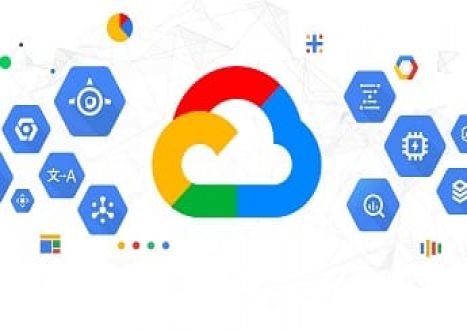







Top Google Certification Exams
- Professional Cloud Architect
- Generative AI Leader
- Professional Machine Learning Engineer
- Associate Cloud Engineer
- Professional Data Engineer
- Professional Cloud Security Engineer
- Professional Cloud Network Engineer
- Professional Security Operations Engineer
- Cloud Digital Leader
- Professional Cloud DevOps Engineer
- Professional Cloud Developer
- Associate Google Workspace Administrator
- Professional Cloud Database Engineer
- Associate Data Practitioner
- Professional ChromeOS Administrator
- Professional Chrome Enterprise Administrator
- Professional Google Workspace Administrator
Site Search:


















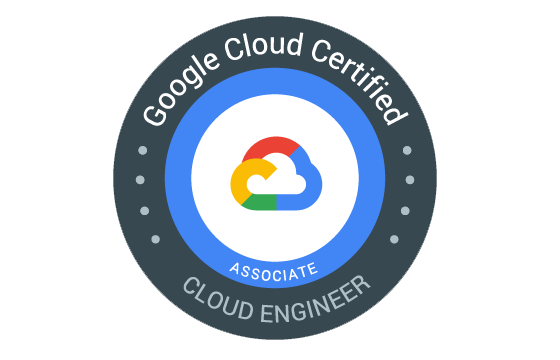

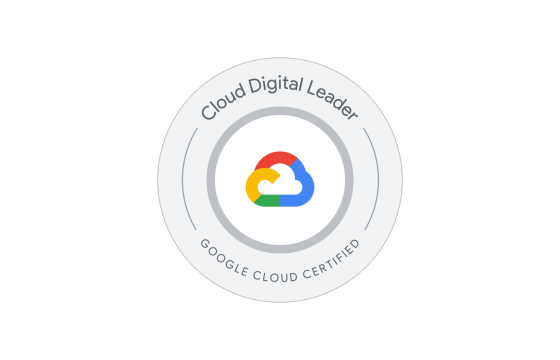
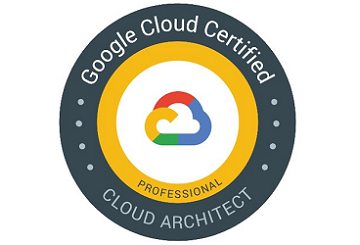


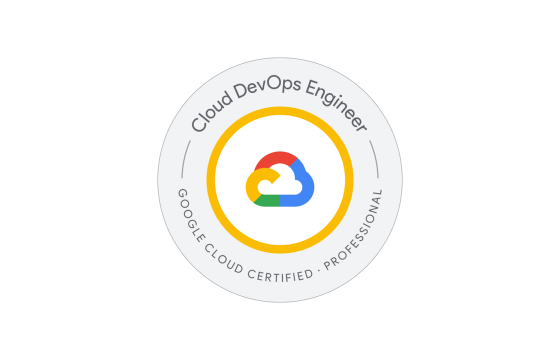
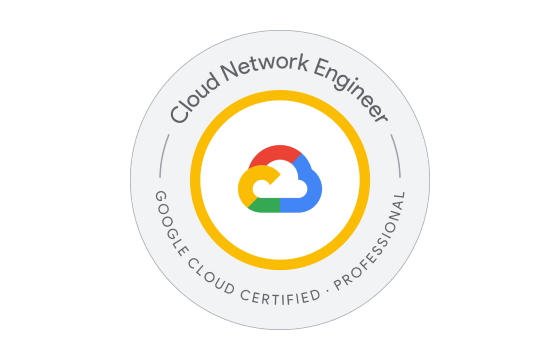
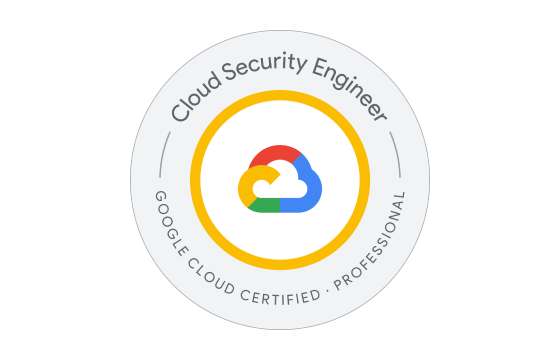
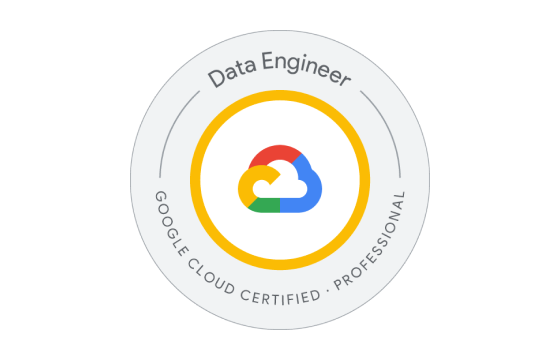

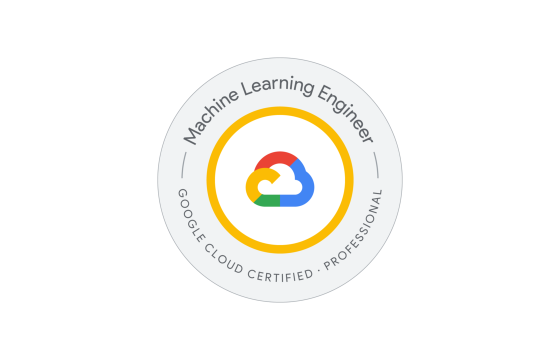



any update on this dumps?
is it REAL DUMPS?
@angeline, premium files for google cloud cert exam are really helpful as it comprises several exam questions and questions with the latest updated and accurate answers. it will help you pass the cert exam easily.
i didn’t manage to attain the pass mark in the google cloud cert exam in my first trial. I am looking forward to utilizing google cloud practice tests in my preparation for the retake. i hope they will help me to attain the passing score.
cloud security dumps are awesome! no more worries about failing in the google cloud cert exam. you just need to get the recently updated dumps and excel like me!
cloud security dumps are awesome! no more worries about failing in the google cloud cert exam. you just need to get the recently updated dumps and excel like me!
premium file for google cloud cert exam has several questions and their respective answers which I have ascertained to be informative regarding google cloud concepts. use this file an I assure you success in the exam.
google cloud platform certification requires the candidates to have profound knowledge and read widely different prep materials comprising the relevant information. i am very confident that the learning materials provided on this website are sufficient to enable the candidates pass the cert exam.
if it were not for the cloud vce files, I couldn’t have managed to pass and earn cloud computing certification. I am very glad guys!
I am very happy that I managed to pass the exam with the help of dumps and earned cloud security certification. these dumps are true! thanks a lot!
google cloud tests are very helpful when preparing for the cert exam. they helped me to pass it easily. utilize them and you will be able to perform excellently, moreover you’ll earn cloud certification which will differentiate you from other it professionals.
google cloud certification is highly valued in the it field. earn this certification in order to prove your outstanding skills in google cloud.